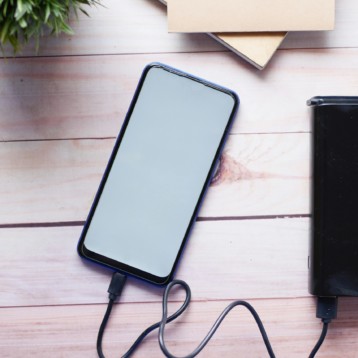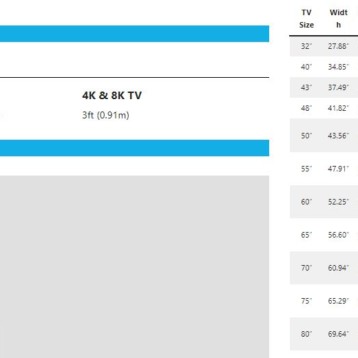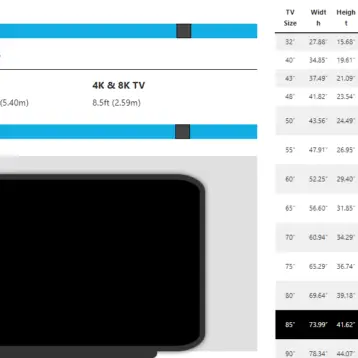In the fast-paced world of technology, the demand for accessible and efficient internet connectivity has never been higher. Piso WiFi, a popular business model providing affordable internet access in public spaces, has gained widespread popularity. In this article, let us dive a little deeper into the intricacies of Piso WiFi management, focusing on Pause Time, Login, and Logout features on the commonly used IP address 10.0.0.1.
About Piso WiFi

Piso WiFi, basically derived from the Spanish word “piso” meaning floor, is a business model where entrepreneurs offer WiFi services in public places like cafes, waiting areas, and transport hubs. The users typically pay for internet access on an hourly or per-minute basis.
Piso WiFi systems typically operate through a web-based interface, with 10.0.0.1 being a common IP address associated with the management console. This interface serves as the control center for configuring various settings, managing user access, and monitoring the system’s performance. Piso WiFi operators can customize the user experience through features like Pause Time, Login, and Logout.
Unveiling the Pause Time Feature
Pause Time is a pivotal feature in Piso WiFi systems, allowing operators to control and manage user sessions effectively. This feature enables the temporary suspension of a user’s internet access without disconnecting them entirely. The Pause Time functionality is particularly useful in scenarios where operators need to address issues such as misuse, bandwidth management, or simply to give users a break.
- Setting Pause Time Limits:
Within the 10.0.0.1 interface, operators can define specific time limits for pausing user sessions. This granular control empowers operators to tailor the Pause Time feature to meet the unique requirements of their establishment. Whether it’s limiting access during peak hours or enforcing time restrictions to ensure fair usage, the Pause Time feature offers a versatile solution.
- Real-time Monitoring and Notifications:
To enhance user experience further, Piso WiFi systems often include real-time monitoring capabilities. Operators can keep a close eye on user sessions, ensuring prompt intervention when necessary. Additionally, notifications can be configured to inform users about the impending Pause Time, minimizing disruption and fostering a user-friendly environment.
Also Read – How To Turn WiFi On LG TV (Troubleshooting Solutions)
How To Login In Piso WiFi 10.0.0.1
- Open a web browser
Use a device connected to the WiFi network or directly to the router via an Ethernet cable.
Open a web browser such as Chrome, Firefox, or Safari.
- Enter the router’s IP address
In the address bar of the browser, type “http://10.0.0.1” and press Enter.
- Enter login credentials
You will be prompted to enter the router’s login credentials. This typically includes a username and password.
Common default usernames are often “admin” or “user,” and the default password might be “admin” or “password.” Check your router’s documentation for the correct credentials.
- Access router settings
After entering the correct credentials, you should have access to the router’s settings.
- Navigate to WiFi settings
Look for a section related to wireless or WiFi settings.
- View or change WiFi settings
Once in the WiFi settings, you can view or change the WiFi network name (SSID), password, security settings, and other configuration options.
Also Read – How to Measure Wi-Fi Signal Strength
How To Pause Time In Piso WiFi 10.0.0.1
- Access the Piso WiFi Management Interface
Open a web browser and enter the IP address 10.0.0.1 in the address bar.
Log in with the administrator credentials. These are usually provided in the user manual or set during the initial setup.
- Locate the Pause Time or Schedule Feature
Navigate through the menu or dashboard to find the section related to access control, scheduling, or pause time.
- Select the Device or User
Identify the device or user for which you want to apply the Pause Time.
- Set the Pause Time Duration
Choose the start and end time for the pause period. This could be in hours and minutes or a specific time range.
- Save or Apply the Changes
After configuring the Pause Time settings, save or apply the changes. This action may be labeled as “Save,” “Apply,” or something similar.
- Check Status
Confirm that the changes have been applied by checking the status or the list of connected devices.
- Monitor and Adjust
Keep an eye on the scheduled pause time to ensure it is working as expected. If necessary, make adjustments or cancel the pause time before it automatically lifts.
Also Read – How To Use Alexa As A Bluetooth Speaker Without WiFi
How To Logout In Piso WiFi 10.0.0.1
- Open a Web Browser
Open any web browser on your device (e.g., Chrome, Firefox, Safari).
- Enter the IP Address
In the address bar of the web browser, type the IP address 10.0.0.1 and press Enter. This should take you to the login page of the Piso WiFi admin panel.
- Enter Admin Credentials
You will be prompted to enter the administrator username and password. If you haven’t changed these credentials, the default ones are often:
Username: admin
Password: admin
Enter the credentials and click on the “Login” or “Submit” button.
- Navigate to Logout Section
Once logged in, navigate through the admin panel to find the section related to user management or logout options. The exact location can vary depending on the Piso WiFi system and its firmware.
- Locate Logout Button
Look for a “Logout” button or link within the admin panel. This is usually found in a menu or sub-section related to user management, session control, or similar.
- Click Logout
Click on the “Logout” button to end the session. This action will log you out of the Piso WiFi admin panel.
- Confirm Logout
Some systems may ask for confirmation before logging you out. Confirm the logout if prompted.
- Close Browser
After successfully logging out, close the web browser to ensure that your session is completely terminated.
Also Read – How To Reset Firestick Without Wifi Or Remote In Just 5 Minutes
User-Friendly Login Experience
The Login process is the gateway to accessing the internet through Piso WiFi systems. A seamless and user-friendly login experience is crucial for customer satisfaction and repeat business. Let’s explore the key aspects of the Login process within the 10.0.0.1 interface.
- Captive Portal Customization:
The 10.0.0.1 interface allows operators to customize the captive portal – the page users see before gaining internet access. This customization not only reinforces branding but also provides an opportunity to convey important information, terms of use, or promotional messages. A well-designed captive portal sets the tone for a positive user experience.
- Authentication Methods:
Piso WiFi systems typically offer multiple authentication methods, ranging from simple password-based logins to more secure options such as SMS verification or ticket-based systems. The 10.0.0.1 interface empowers operators to choose the most suitable authentication method for their establishment, balancing security with user convenience.
- Guest Access and User Accounts:
For establishments that cater to a diverse clientele, providing guest access is essential. The 10.0.0.1 interface facilitates the creation and management of user accounts, enabling operators to differentiate between regular users and one-time guests. This segregation ensures a tailored experience for various user categories.
Ensuring a Smooth Exit with Logout:
The Logout process is often an overlooked but crucial aspect of the Piso WiFi user experience. A well-implemented Logout mechanism not only enhances security but also contributes to the overall satisfaction of users.
- Automatic Logout Timers:
To prevent unauthorized access and optimize resource utilization, Piso WiFi systems offer automatic logout timers. Within the 10.0.0.1 interface, operators can configure the duration of user sessions, ensuring that connections are automatically terminated after a specified period of inactivity. This feature is particularly beneficial in high-traffic environments where turnover is frequent.
- Manual Logout Options:
In addition to automatic logout timers, the 10.0.0.1 interface provides operators with the ability to manually log out users. This feature is valuable in situations where users forget to disconnect or encounter technical issues. By offering manual logout options, operators can swiftly resolve issues and maintain a smooth flow of users.
Additional Key Features of Piso WiFi
Authentication Protocols:
Piso WiFi systems often employ various authentication protocols, including simple username and password combinations or more advanced methods like QR code scanning. The 10.0.0.1 IP address is the gateway for configuring these authentication protocols, allowing operators to choose the most suitable method for their business model.
Security Considerations:
Securing the login process is paramount to protect user data and maintain the integrity of the Piso WiFi network. Encryption, strong password policies, and regular security updates through the 10.0.0.1 interface contribute to a robust defense against potential threats.
Logout Functionality:
A well-implemented Logout functionality is essential for ensuring fair usage of Piso WiFi resources. Users should have an easy and intuitive way to end their session, freeing up bandwidth for others.
User Interface:
The 10.0.0.1 interface serves as the control center for managing user sessions, including initiating logouts. Business owners can customize the logout options, potentially offering incentives or discounts for users who responsibly end their sessions, fostering a cooperative and positive user community.
Session Tracking:
The ability to track user sessions is a key benefit of implementing logout functionality. Operators can gather valuable data on user behavior, peak usage times, and popular services, allowing for informed business decisions and service optimization.
Troubleshooting Connectivity:
The 10.0.0.1 interface often includes diagnostic tools to identify and resolve connectivity issues. Operators can use these tools to troubleshoot network problems, ensuring a reliable and stable internet connection for users. Additionally, clear and concise error messages on the captive portal can guide users in troubleshooting common issues on their end.
User Education and Communication:
To preemptively address potential concerns, operators can leverage the 10.0.0.1 interface to communicate with users. Providing clear instructions on the captive portal, explaining the Pause Time feature, and offering troubleshooting tips can significantly reduce user frustration. Proactive communication fosters a positive relationship between operators and users.
Future Trends and Innovations
As technology continues to evolve, Piso WiFi systems are likely to incorporate advanced features and innovations to stay competitive. From artificial intelligence-driven user analytics to seamless integration with mobile applications, the future of Piso WiFi holds exciting possibilities. Operators should stay abreast of emerging trends to continually enhance the user experience and stay ahead of the curve.
Conclusion
In conclusion, effective management of Pause Time, Login, and Logout features on Piso WiFi networks is crucial for both business owners and users. The 10.0.0.1 IP address serves as the central hub for configuring these functionalities, offering a user-friendly and customizable interface. By understanding and optimizing these features, Piso WiFi operators can create a seamless and secure internet experience, ensuring customer satisfaction and business success in the competitive world of public WiFi services.










